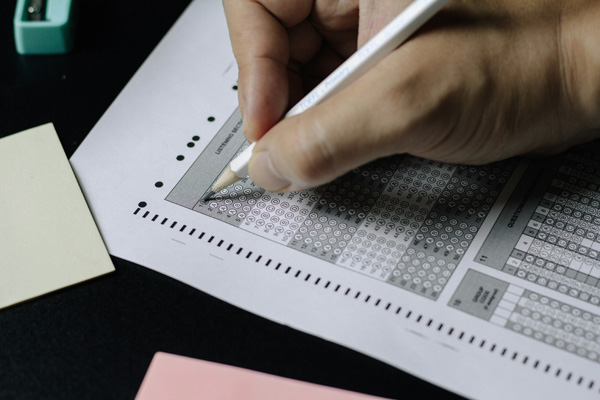The SAT continues to evolve as it becomes fully digital in 2025

[Paper, hand, test, and exam image. Photo Credit to Unsplash]
The College Board transitioned into a fully digital SAT in 2024, arguably making what many consider the test’s biggest change in format since it was first administered in 1926.
For nearly a century, students had always taken the SAT, officially known as the Scholastic Assessment Test, on paper.
That changed when the College Board launched a pilot program in which students in the United States and abroad were given the chance to try a digital version.
The pilot program revealed that four out of every five test takers found the digital format less stressful, and the majority of test proctors also reported a positive experience.
Encouraged by these results, the College Board introduced the digital SAT to international students in 2023.
By 2024, American students also transitioned, and the paper exam was fully phased out.
Today, the SAT exists only in its digital form.
It can be taken on a tablet, a school-provided device, or one loaned by the College Board.
The test is scored out of 1600 points, the same scale used since 2016, and consists of two main sections: Reading & Writing and Math.
Each is divided into two modules that adapt in difficulty depending on a student’s performance in the first module.
A strong performance can lead to a harder second set of questions, whereas a weaker performance results in easier ones.
Although many students have welcomed the new format, challenges remain.
Because the exam is now digital, students can no longer annotate directly on the test as they could with paper booklets.
Another issue is the screen time required, as staring at a device for about two hours with only brief breaks can lead to eye strain and fatigue, making it harder to concentrate.
Still, the shift offers several benefits.
One major advantage is test security.
In the old paper system, if a single test was compromised, scores for many students could be canceled.
With the digital format, each student receives a different version of the exam, greatly reducing the risk of large-scale invalidations.
The adaptive design also creates more tailed options for students.
Those who struggle on the first module encounter an easier second set, giving them more chances to answer correctly.
Meanwhile, those who perform well face a more challenging set that avoids unnecessary extremes, helping them demonstrate mastery without being overwhelmed.
Priscilla Rodriguez, vice president of College Readiness Assessments at College Board, summarized the shift by saying, “The digital SAT will be easier to take, easier to give, and more relevant.”
By turning digital, the exam now takes about two hours instead of three.
Schools no longer need to manage stacks of paper booklets and scantrons, and the format aligns with how modern students typically engage with text on screens rather than on paper.

- Brad Hu / Grade 10
- Seoul International School

![THE HERALD STUDENT REPORTERS [US]](/assets/images/logo_student_us.png)
![THE HERALD STUDENT REPORTERS [Canada]](/assets/images/logo_student_ca.png)
